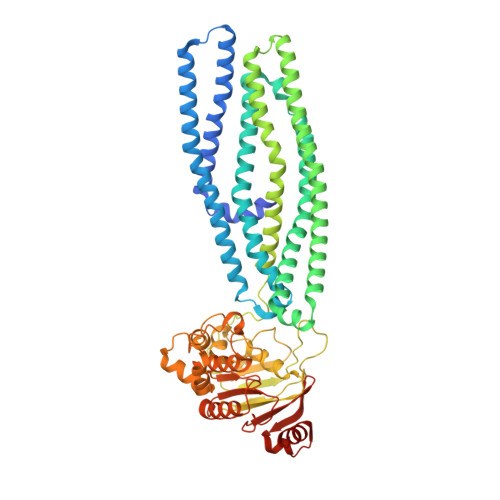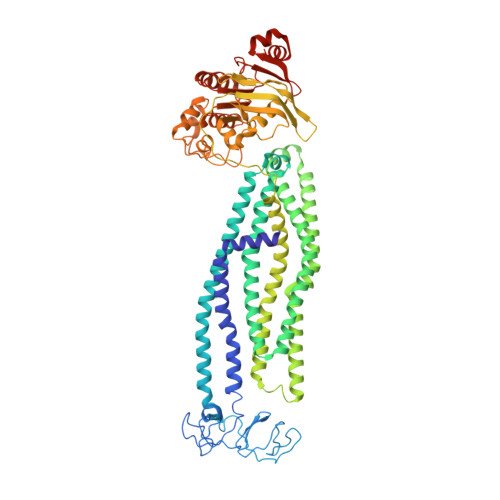Asymmetric conformations and lipid interactions shape the ATP-coupled cycle of a heterodimeric ABC transporter.
Tang, Q., Sinclair, M., Hasdemir, H.S., Stein, R.A., Karakas, E., Tajkhorshid, E., Mchaourab, H.S.(2023) Nat Commun 14: 7184-7184
- PubMed: 37938578
- DOI: https://doi.org/10.1038/s41467-023-42937-5
- Primary Citation of Related Structures:
8FHK, 8FMV, 8FPF, 8SZC, 8T1P, 8T3K - PubMed Abstract:
Here we used cryo-electron microscopy (cryo-EM), double electron-electron resonance spectroscopy (DEER), and molecular dynamics (MD) simulations, to capture and characterize ATP- and substrate-bound inward-facing (IF) and occluded (OC) conformational states of the heterodimeric ATP binding cassette (ABC) multidrug exporter BmrCD in lipid nanodiscs. Supported by DEER analysis, the structures reveal that ATP-powered isomerization entails changes in the relative symmetry of the BmrC and BmrD subunits that propagates from the transmembrane domain to the nucleotide binding domain. The structures uncover asymmetric substrate and Mg 2+ binding which we hypothesize are required for triggering ATP hydrolysis preferentially in one of the nucleotide-binding sites. MD simulations demonstrate that multiple lipid molecules differentially bind the IF versus the OC conformation thus establishing that lipid interactions modulate BmrCD energy landscape. Our findings are framed in a model that highlights the role of asymmetric conformations in the ATP-coupled transport with general implications to the mechanism of ABC transporters.
Organizational Affiliation:
Department of Molecular Physiology and Biophysics, Vanderbilt University, Nashville, TN, 37232, USA.



















